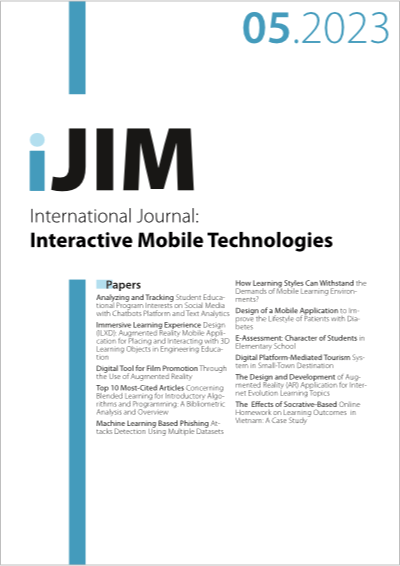Immersive Learning Experience Design (ILXD): Augmented Reality Mobile Application for Placing and Interacting with 3D Learning Objects in Engineering Education
DOI:
https://doi.org/10.3991/ijim.v17i05.37067Keywords:
immersive learning, augmented reality, mobile application, CNC milling machine, engineering educationAbstract
The Computer Numerical Control (CNC) machine operates based on a numerical control program generated semi-automatically by a Computer Aided Manufacturing (CAM) system or manually by the operator. Repeated practice is required to operate a CNC machine. For an inexperienced operator (student), the practicum requires extensive use of materials and cutting instruments. In the meantime, the number of laboratory equipment for the CNC programming practicum remains limited, and the 3-axis CNC milling machine training unit is inadequate for the number of students. For this reason, we need a medium that can simulate the machining process to aid students in their early stages of learning. This research aims to create a mobile application for milling machine visualization based on augmented reality. This augmented reality (AR) application, "MM: CTU 3-Axis," or Machine Milling CNC Training Unit 3-Axis, was designed with 3D virtual objects to provide students with knowledge and practical experience. The application development model used Multimedia Development Life Cycle (MDLC). This research yields an Android-based augmented reality (AR) application called "MM: CTU 3-Axis" that does not require markers. The development and verification results demonstrated that this application could aid in learning CNC programming and machining practicum, as well as reduce the cost of using cutting tools and the cost of using materials due to repeated experiments on CNC machines.
Downloads
Published
How to Cite
Issue
Section
License
Copyright (c) 2023 Agariadne Dwinggo Samala, Mita Amanda

This work is licensed under a Creative Commons Attribution 4.0 International License.


